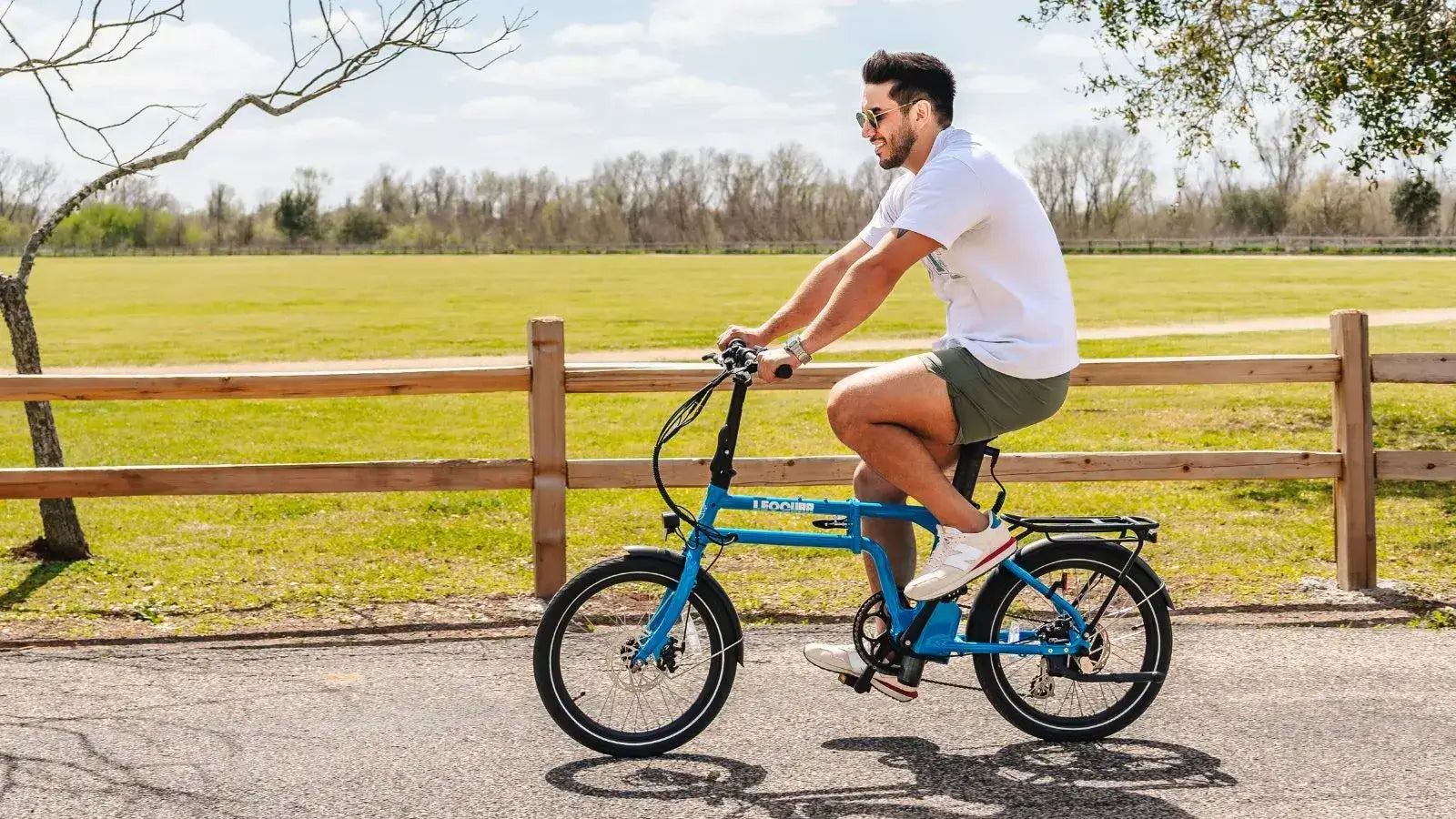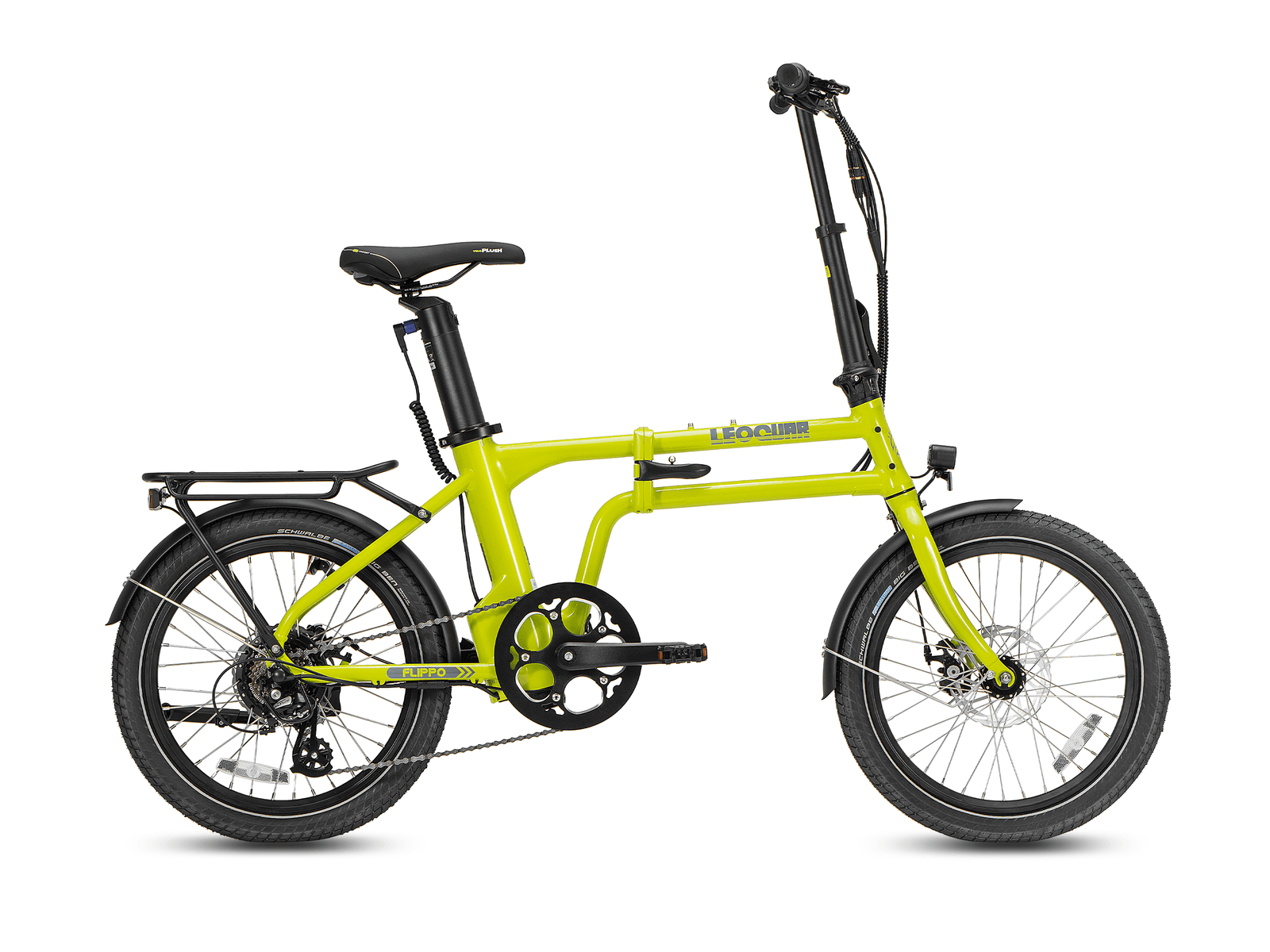
Struggling with Low Range or Speed? What’s Holding Your Electric Bike Back
Key Factors Affecting E-Bike Performance
E-bikes are changing how people get around. More riders are choosing them for daily commutes and outdoor adventures, but some face problems with speed and range.
Electric battery problems are often the main reason for poor performance. The battery's health directly impacts how far and fast your e-bike can go, especially when climbing hills or carrying heavy loads. Your e-bike's motor is another crucial piece of the puzzle that affects speed. A powerful motor helps you tackle steep hills with ease, while a weak one might leave you struggling.
External factors like weather and road conditions play a big role too. Wind resistance can slow you down significantly, and cold temperatures might reduce your battery's efficiency. The weight of both rider and bike affects performance dramatically. Heavier loads require more power, which means shorter range and potentially slower speeds. Temperature changes can impact your e-bike's battery life. Hot summer days might reduce battery efficiency, while cold winter rides could temporarily decrease your available power. Your riding style makes a big difference in how far you can go. Aggressive acceleration and frequent stops will drain your battery faster than steady, smooth riding.
Regular maintenance can make a huge difference in your e-bike's performance. Simple things like keeping your tires properly inflated and chains well-oiled help maintain speed and range.
Many riders have found that upgrading components can boost performance. Getting a better battery or motor might be worth considering if you're consistently unhappy with your speed or range.
Identifying Factors That Limit Your E-bike's Performance
Your e-bike's low speed and limited range can be frustrating. These issues usually come from the battery, motor, weight, and weather conditions that affect how your bike performs.
Understanding what affects your e-bike's performance helps you get the most from your rides. The battery and motor are the main parts that determine how far and fast you can go, but other things matter too.
Battery Performance
Battery capacity is measured in Watt-hours (Wh). A bigger battery means you can ride further, but how efficiently your bike uses power is just as important as battery size.
Choosing the right battery makes a big difference in how far you can ride. A 500Wh battery typically gives you 25-30 miles of riding, while a 750Wh battery can take you 40-50 miles.
Motor Power
The motor's power affects how fast you can go and how well your bike climbs hills. Most city riders do fine with motors between 250 and 500 watts.
If you ride a lot of hills, you might want a stronger 750-watt motor. Remember that more powerful motors use more battery power, so you won't be able to ride as far.
Weight has a big impact on how your e-bike performs. The heavier your bike is, the more power it needs to move.
Environmental conditions change how your e-bike performs too. Wind, temperature, and different road surfaces all affect your bike's range and speed in important ways.
Here's what affects your e-bike's performance the most:
• Battery size and power use
• Motor strength
• Total weight (bike + rider + cargo)
• Weather and road conditions
Checking these things regularly helps you get better performance from your e-bike. Making smart upgrades can help too, but you need to think about how changes might affect other parts of your riding experience.
Understanding these limits helps you know what to expect from your e-bike. Whether you're riding to work or exploring hills on weekends, knowing what affects your bike's performance helps you get the most from your rides.
Technical Deep Dive: Battery & Motor Performance
Understanding how batteries and motors work in your e-bike is key when asking, "What affects the speed of an electric bike?" The following sections break down the important parts that control how far and fast your bike can go.
Battery Power and Range
Every e-bike's performance starts with its battery power, measured in watt-hours (Wh). A bigger 500 Wh battery can take you 20 to 50 miles in perfect conditions. Your actual distance depends on things like hills, how much you weigh, and how much power you use.
The motor is just as important as the battery. While a motor's power is measured in watts, its pulling strength is measured in Newton-meters (Nm). A 250W motor with strong pulling power often works better than a 300W motor with weak pull.
Different batteries work in different ways. Modern lithium-ion batteries last longer and store more power than old-style lead-acid ones. The newer batteries can give your bike both better range and more speed.
Motor design plays a big role in how your bike performs. Some motors work great on flat ground but struggle on hills. Direct-drive motors give smooth power but might be slow on steep climbs. If your bike feels slow going uphill, checking the motor type might help solve the problem.
Taking care of your battery and motor helps them work their best. Basic bike maintenance like checking connections and keeping parts clean can prevent problems before they start. Some fancy bikes even tell you when the battery is getting weak or the motor is too hot.
Here's a simple guide to battery power and range:
| Battery Capacity (Wh) | Expected Range (Miles) | Notes |
| 360 Wh | 12 – 15 | City riding |
| 500 Wh | 20 – 30 | Mixed roads |
| 750 Wh | 35 – 50 | Heavy use |
Understanding these basics can help if you're "Struggling with Low Range or Speed." With proper care and the right setup, you can make sure your e-bike gives you the best ride possible.
Optimizing Electric Bike Range & Speed
When it comes to making your e-bike perform better, there are several ways to help. Your electric bike's speed and range depend on how well you take care of it and how you ride it.
Keep your tires properly inflated - this is one of the easiest ways to improve your e-bike's performance. Checking tire pressure regularly means your battery power goes into moving you forward instead of fighting against soft tires.
Good maintenance is key to getting the most from your electric bike motor. A basic tune-up can make a big difference in how fast and far you can ride.
Key Areas for Improvement
Weight matters a lot for e-bike performance. Take off any extras you don't need for your ride.
The way you ride affects your battery life significantly. Try to keep a steady speed instead of constantly speeding up and slowing down. Motor settings play a huge role in how your bike performs. Find the right balance between power and battery life by testing different assist levels.
Changing how you ride can help your battery last longer. Start slowly and avoid sudden bursts of speed when possible. Regular maintenance keeps your e-bike running smoothly. Clean and oil your chain regularly, and make sure your brakes aren't rubbing.
The right upgrades can make your electric bike faster and more efficient. But always check local rules before making any major changes to your bike.
By following these tips, you can get more range and better speed from your electric bike. Remember that consistent care and attention to how you ride make the biggest difference.
Small changes add up to big improvements in your e-bike's performance. Keep track of what works for you and adjust as needed.
Product Recommendations & Enhancements
Understanding Speed and Range Issues
Electric bikes sometimes struggle with low range or speed issues. Making smart upgrades to your bike's parts can help solve these problems and give you better performance on the road.
Your bike's power system components also play a huge role in performance. You can find useful upgrades in the Electric Bike Components section, including better motor controllers and sprockets. Upgrading these parts often leads to noticeable improvements in how your bike runs.
The electric bike battery and motor work together to determine your riding experience. When you choose the right parts that work well together, you can get much better results. A good upgrade package can help your bike go faster and run longer on each charge.
You can boost both speed and range by picking quality parts that are proven to work. Making these changes will help overcome what's holding your electric bike back and make every ride more enjoyable. For more detailed information about electric bike speeds, check out How Fast Do Electric Bikes Go? – REI Expert Advice.
Conclusion & Future Considerations
The key to solving electric bike range and speed issues lies in understanding both parts and riding habits. A deep look at your e-bike's performance reveals the complex relationship between battery life, motor power, and bike design.
Regular maintenance can make a huge difference in how far and fast your electric bike can go. Simple changes like checking tire pressure and keeping your bike's weight down can boost performance dramatically.
Your electric bike battery and motor need constant attention to work their best. Brief daily checks help prevent problems that could slow you down or reduce your riding range on long trips.
Smart riders know that what's holding their electric bike back often has simple solutions. Tracking your bike's performance and making small adjustments can lead to big improvements in speed and distance.
Looking to the Future
Tomorrow's electric bikes will be even better than today's. New developments in battery and motor technology keep pushing what these bikes can do.
Stay connected with expert riders and e-bike communities online to learn the latest tips. Reading trusted reviews and joining discussions can help you make smart choices about your motorised bicycles.
Electric bike technology keeps moving forward at an amazing pace. Your e-bike can reach its full potential with the right care and attention to detail.
The path to better range and speed is clear. By following these proven steps, you can overcome what's holding your electric bike back and enjoy the ride you've always wanted.
FAQs
1. Q: How can I increase my electric bike's range?
A: Maintain proper tire pressure, reduce overall weight, use appropriate assist levels, and ensure regular battery maintenance.
Q: What's the average range of an electric bike?
A: Depending on battery capacity, terrain, and riding style, e-bikes typically range from 20-50 miles per charge.
Q: Why is my electric bike running slower than usual?
A: Common causes include low battery charge, improper tire pressure, excessive weight, or motor maintenance issues.
Q: How often should I service my e-bike?
A: Schedule basic maintenance every 500 miles or 3 months, with annual comprehensive service checks.
Q: What affects e-bike battery performance?
A: Temperature, terrain, rider weight, assist level, and battery age all impact performance and range.








































Leave a comment